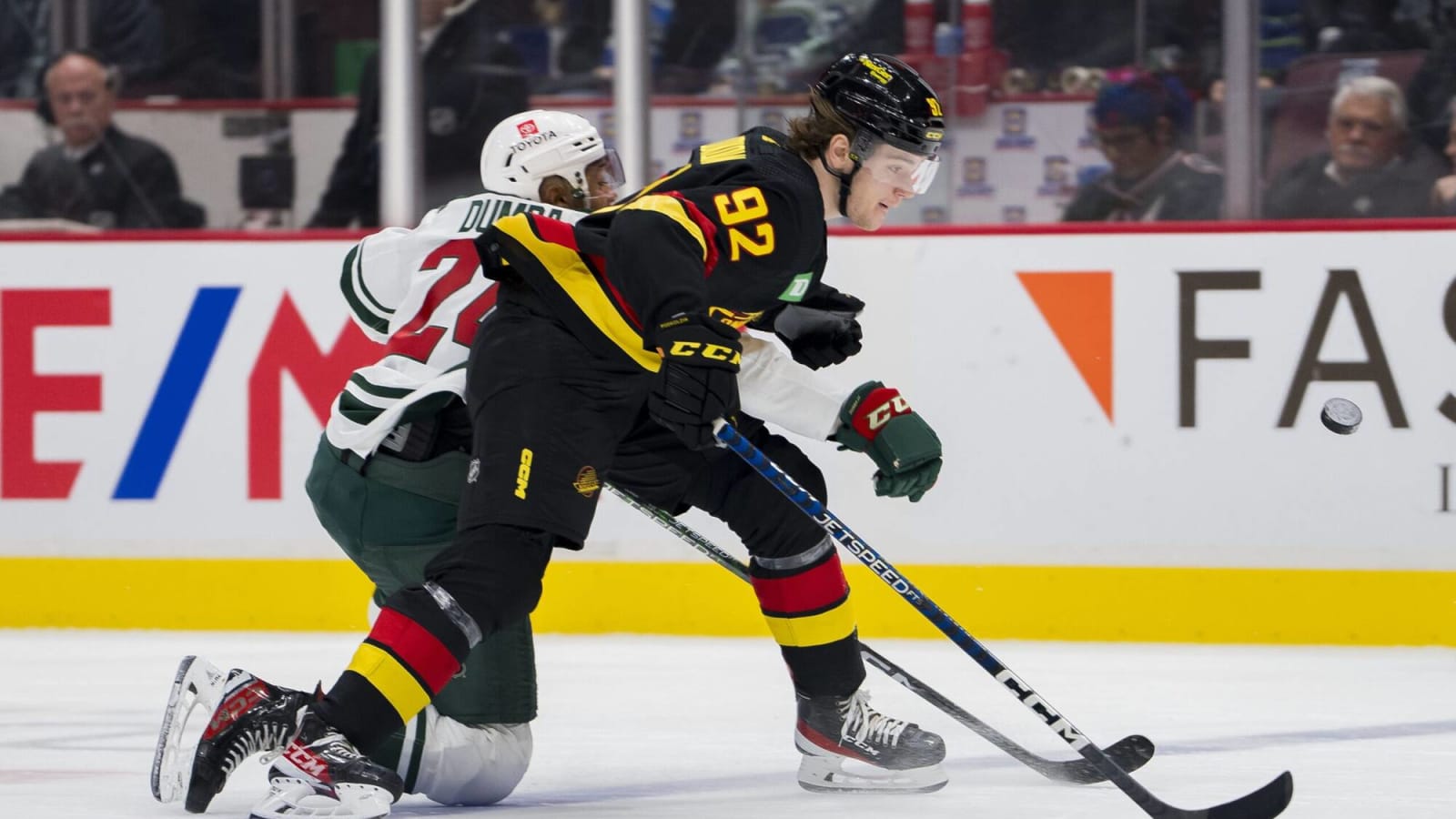
Teams, open up your wallets, and fans, get your emoji-laden reactions ready.
It’s Free Agent Frenzy 2023, and the cash and the contracts are about to start flowing.
We’ve already written extensively about what we think the Vancouver Canucks can afford to spend during the 2023 offseason.
In short, the Canucks have about $6.445 million in cap space currently available, and that number can be greatly extended — by up to $5.75 million through the placement of Tanner Pearson and Tucker Poolman on LTIR, by another $6 million through the dumping of Tyler Myers, and etcetera. It’s more money than they’re used to having, but a good chunk of it will be spent just filling out the roster from its current 18 players to a maximum of 23.
Of course, unless the Canucks plan to hand out exclusively one-year contracts — a fine strategy, but an unlikely one — the money spent on FAF2023 will impact the salary books in the seasons beyond 2023/24, too, and that’s where GM Patrik Allvin and Co. need to be careful with their cash.
Just because the Canucks can afford a contract in the present day doesn’t mean they can afford it in all the years to come.
But saying “spend carefully” isn’t very original or practical heading into the Frenzy, so let’s see if we can nail down exactly how much room the Canucks have to spend on new acquisitions beyond the 2023/24 campaign.
One might assume that the Canucks will have more to spend in the offseasons to come than they do right now. But is that really true?
There’s expected to be another increase of about $4 million to the cap ceiling for the 2024 offseason, as the NHLPA’s escrow backlog is finally paid off and the league moves officially past the pandemic era. That should bring the spending limit to about $87.5 million.
In addition to that extra cap space, the Canucks in particular will be adding space via the expiry of some particularly expensive contracts. If he’s not traded before then, Myers comes off the books at that point, as does Tanner Pearson (LTIR or no) and Anthony Beauvillier. That’s a total of $13.4 million in cap space, which combines with the $4 million cap growth to give the Canucks an extra $17.4 million over what they can spend right now.
So, so long as they can scrounge up the cap space this summer, the Canucks should be able to spend at least that much on new contracts that go beyond the 2023/24 season, right?
Au contraire, nos amis.
Because as far as the Canucks are concerned, a sizeable portion of that space is already as good as spent.
They can earmark at least $3 million of it, if not more, for the raise that will have to be given to Elias Pettersson on his next, presumably long-term contract.
That’s probably also the max that should be set aside for Filip Hronek’s raise, also due in the summer of ’24.
Tack on some minor raises for players like Vasily Podkolzin and Nils Åman along the way, and the Canucks probably spend around $7 million just renewing their internal contracts over the next calendar year.
Another player who will receive a “raise” before 2024/25 is Oliver Ekman-Larsson, whose buyout cap hit rises $2 million, with another similar rise coming the year after that.
So, there’s more than half of that $17.4 million effectively gone already.
None of which takes into account Ethan Bear, who has to be considered an absolute wildcard at this juncture.
What the Canucks are left with is about $6-6.5 million that can be safely added to the books for 2024/25 and beyond, in addition to the $6ish million it’ll cost to fill out the 2023/24 roster.
Put differently, if the Canucks were able to open up about $12 million in space right now — either via LTIR or a Myers trade — they could more-or-less safely spend that full amount on contracts of two years or longer, but not a penny more.
Some of that money, of course, will go to cheaper and shorter-term deals. A backup goalie is probably coming in somewhere in the range of $1 million, as is another depth defender or two. But that still could leave up to $9 million on the table to spend on the Canucks’ rumoured pursuit of a top-four D and a checking line center, which could be all they need.
And if they need more? That will necessitate the removal of some contracts that extend beyond this season, like that of Conor Garland or Brock Boeser.
Such contracts should be easier to move in the seasons beyond 2024/25, and don’t forget that the salary cap is expected to keep rising year-by-year for a good long while now. So long as the Canucks employ responsible spending now — as in sticking to the budget we’ve outlined above — they can neatly avoid any future cap crunches, which would be a nice change of pace for this franchise.
If anything, it’s nice to know that a couple new UFA additions, unless they’re of the extremely exorbitant variety, aren’t going to blow things up in future years. Ideally, this frees Canucks fans up to just enjoy those signings for the qualities that they bring to the team…and not for the subsequent headaches their contracts will induce.
It’s the Frenzy without the Panic, and it’s not a bad place to be.
More must-reads:
- The best performances by rookies in the NHL playoffs
- Maple Leafs star breaks silence on postseason absence, addresses Game 4 status
- The '100 catches in an NFL season' quiz
Breaking News
Customize Your Newsletter
 +
+
Get the latest news and rumors, customized to your favorite sports and teams. Emailed daily. Always free!

